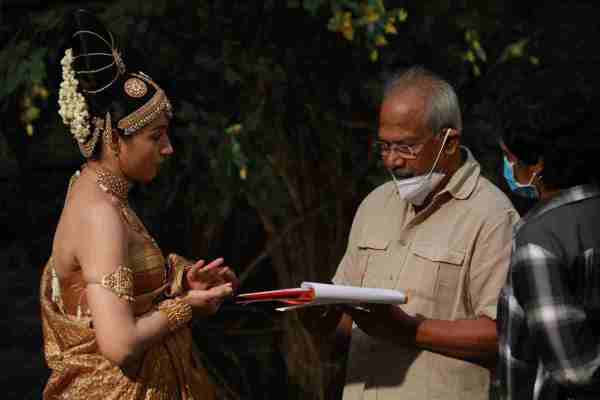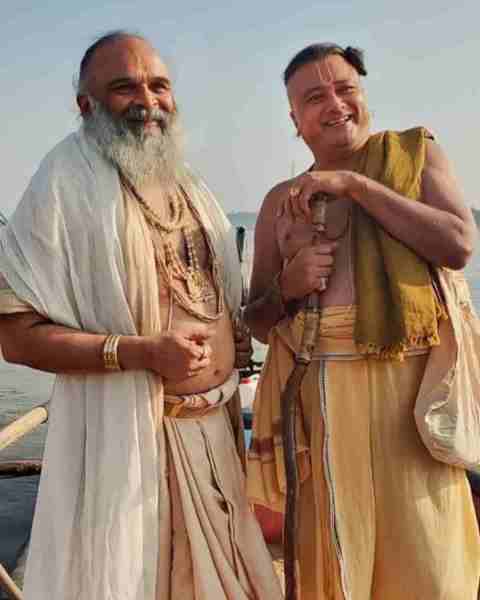 The magnificent journey of Ponniyin Selvan in Tamil cinema.
The magnificent journey of Ponniyin Selvan in Tamil cinema. It seems nothing happens ahead of its time. So iconic writer Kalki Krishnamurthy’s epic novel Ponniyin Selvan waited for more than six decades for the right time to claim its rightful place on Indian celluloid. When Krishnamurthy began to write Ponniyin Selvan for the weekly edition of the Kalki magazine in the early 1950s, he may not have known how big it would be. He would have had little idea at the time that he was creating a beast, which even the legends of Tamil cinema would fail to tame. Ponniyin Selvan is a true giant slayer as the likes of MG Ramachandran and Kamal Haasan tried and failed in adapting this magnificent novel for the big screen.
After the humongous success of Nadodi Mannan (1958), MGR declared his next film will be the big screen adaptation of Ponniyin Selvan. In the year 1959, he also published an advertisement announcing the same in a December edition of the monthly film magazine Nadigan Kural.
“In the late 50s, the Tamil film industry was turning away from historical films and moving towards social stories. Even though Parasakthi came out in 1952, the strong tilt towards socially-relevant stories only happened in the late 50s,” Ponniyin Selvan 1 actor and writer Mohan Raman told indianexpress.com.
It is said that Nadodi Mannan itself was a risky venture for MGR as he gambled all his wealth on making this costume drama about a vagabond king. If the film had flopped at the box office, that may have cost MGR dearly. But, his gamble paid off. Nadodi Mannan was a smash hit and elevated MGR’s stardom to another level. Buoyed by the success of the film, which also marked his debut as a director, MGR set his eyes next on Krishnamurthy’s epic saga. He formally bought the rights to the novel from Krishnamurthy’s family and started to put a team together to make his dream a reality.
“MGR wanted to direct it and act in it. Filmmaker K. Subramanyam, who was also the godfather of MGR, was roped in for the project to advise MGR on the direction. Subramanyam had also helped him while he was making Nadodi Mannan,” recalled Mohan.
 Trisha, Vikram and Aishwarya Rai Bachchan in PS: 1. (Photo: PR Handout)
Trisha, Vikram and Aishwarya Rai Bachchan in PS: 1. (Photo: PR Handout) A Vikatan report published in 2016 claimed that MGR, who knew the scale and scope of the project, wanted to even shoot it in English. He had planned to ask C. N. Annadurai, his political mentor, to write the dialogues for the film’s English version.
Despite MGR’s repeated attempts, he was unsuccessful in turning Ponniyin Selvan into a big-screen spectacle. It’s said that he never gave up on this dream even when he became a full-time politician. He wanted to see the book come to life on the big screen but it never happened in his lifetime.
MGR handed over the baton to Kamal Haasan
In a Kalki edition published in 1989, Kamal had revealed his grand plans for the movie. The actor disclosed that it was Mani Ratnam who suggested they could next make Ponniyin Selvan. Fresh off the success of Nayakan, this mammoth project must have seemed doable.
Kamal had estimated that it would cost about Rs 2 crore to make Ponniyin Selvan back in the day. And he had also planned that instead of building sets, the film should be shot in real locations that were mentioned in the novel. The actor had also zeroed in on the main cast and crew, which included Rajinikanth, Sathyaraj, Prabhu, cameraman PC Sreeram and composer Ilaiyaraaja. “Mani almost finished the script,” noted Mohan.
Kamal also knew that this film cannot be made without the aid of superior special effects technology, which must be imported from abroad. And that was expensive.
 Trisha and Mani Ratnam on the sets of PS:1. (Photo: PR handout)
Trisha and Mani Ratnam on the sets of PS:1. (Photo: PR handout) One of their biggest challenges was the length of the movie. Kamal Haasan had revealed that they even thought about making it a two-part series, taking inspiration from Francis Ford Coppola’s The Godfather trilogy.
“When they looked at the project again, the size of the story and budget, the need to keep the film under 3 hours, would have forced them to mercilessly chop scenes that the audience would expect to see in the movie,” reasoned Mohan. “The budget was way out of control. Kamal even thought of making the film both in Tamil and Telugu (to expand the film’s market).”
Again, the novel never made it beyond the discussion table.
Mani tried, tried and tried
But, Mani Ratnam kept his ambition to turn this five-volume novel series into a movie. “Post-2000, Mani made his second attempt, which went almost to the point of filming. I do know that he had even fixed the lead artistes (Vijay, Mahesh Babu). This time I don’t know what was the reason for him to drop the project, but I suspect it was budget and the length,” Mohan, who plays the role of Anirudha Brahmarayar in PS:1, said.
 Mohan Raman and Jayaram on the sets of PS:1. (Photo: PR handout)
Mohan Raman and Jayaram on the sets of PS:1. (Photo: PR handout) Mani Ratnam could have also dropped the project because the special effects that he could afford weren’t just good enough to realize his vision for the movie. “In a way, I am glad this film didn’t materialize back then because I feel today we are far more equipped to handle such a subject on screen given the technological advances. This film is made for the big screen as it has an expansive set design, action, costumes, photography and pretty much everything,” the director told IANS earlier.
And the Indian film industry saw a tectonic shift with the global success of director SS Rajamouli’s two-part epic series Baahubali. “He (Rajamouli) opened the door for all of us. He has shown us that you can tell stories in two parts and be successful. I think PS is possible today because of Baahubali,” said Mani Ratnam, giving credit where it’s due while promoting PS:1 in the Telugu states.
In the post-Baahubali era, making period dramas about kings and queens came into vogue in the Indian film industry.
Once Mani Ratnam was able to take the project to the floors, he got cracking. The years of preparation had allowed the director to shoot such a massive project in one go. The budget of this project may have tripled in lesser hands. But in the hands of Ratnam, production designer Thota Tharani, and cameraman Ravi Varman, it was a different story. “This film is a work of masters,” said Mohan. For example, Thota Tharani built convertible sets for this project that saved time and money for its producers.
“The soul of Kalki (Krishnamurthy) waited for a filmmaker like Mani, whose vision and visual thinking matched his own,” said Mohan as he got a little philosophical and sentimental, remembering the novel’s over six-decade journey in Tamil cinema.
Mani Ratnam shot both the parts of Ponniyin Selvan reportedly at Rs 400 crore. The production went on for two years. The director would have completed the shoot in 2020 and released the movie in 2021, if not for the Covid-induced lockdown.
Set in circa 900 AD, Ponniyin Selvan tells the tale of an epic power struggle that unfolded in and around the Chola Empire. The film has a sprawling star cast, including Vikram, Aishwarya Rai Bachchan, Jayam Ravi, Karthi, Trisha, Aishwarya Lekshmi, Sobhita Dhulipala, Prabhu, R Sarathkumar, Vikram Prabhu, Jayaram, Prakash Raj, Rahman and R Parthiban.